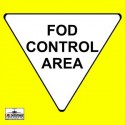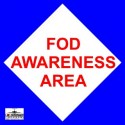Compliments of U.S. Air Force “Flying Safety” Magazine
SMSGT BARRY TROUBA
3rd Component Repair Squadron Elmendorf AFB, AK
With a combined experience of over 60 years repairing and operationally testing jet engines, this was just another “regular” day for this experienced run team. The long Alaskan winter was almost over and spring was in the air. The team members busied themselves looking at the engine’s maintenance records to ensure everything was in order. The T56 turboprop engine had been removed for metal on the magnetic drain plug and had required a reduction gearbox change earlier in the week. After the gearbox assembly was replaced with a new unit from depot, the Jet Engine Intermediate Maintenance (JEIM) shop technicians performed a pre-Test Cell inspection and called Test Cell for the test run. After another careful inspection, Test Cell technicians towed the engine to the facility for loading, initial leak check and functional checks.
This experienced run team had worked together for several years and were confident in their abilities. Communication headsets kept the team aware of each member’s movements and tasks, even though they were well aware of each other’s routine from experience. After the required engine preparation, intake and exhaust inspections were completed, and the team proceeded with servicing the engine oil and propeller hydraulic systems. Next, the engine was motored over in order to purge air from the oil and hydraulic systems. The run supervisor energized the start switch and motored the engine for approximately 30 seconds. All indications seemed fine until the start switch was released and the engine started to coast down.
The engine run supervisor noticed the engine seemed to spool down faster than normal, and the propeller didn’t spin as long as usual. The ground man did an intake inspection, and much to his surprise he found damage to the first and second stage compressor areas. Several shreds of red cloth material entwined between the compressor blades made the cause of the fast spool-down readily apparent.

The engine was impounded and an investigation was launched to identify the extent of damage and determine how and why it happened. After a complete engine teardown, the JEIM shop gave investigators the good and bad news. The good news was the damage was isolated to the compressor section of the motor. The bad news was that extensive compressor. damage from a single rag would require depot-level repair. The really bad news was that all of the damage was self-inflicted and could easily have been prevented. Price tag to repair this Class C mishap, approximately $40,000. The maintenance investigation revealed that all of the required foreign object damage inspections, inprocess inspections and supervisory inspections had been performed and documented in accordance with directives during each step of repair and reassembly. Investigation also revealed that the test cell technicians had performed inlet and exhaust inspections prior to motoring the engine. The mystery of how the rag ended up in the engine inlet was discovered during a look-back on how the Composite Tool Kit (CTK) was inventoried prior to the technicians motoring the engine for servicing.
The engine run supervisor did a full inventory of the CTK and had accounted for all ten rags that were signed out. Nine rags in possession, and the tenth rag with the ground observer for servicing. What the supervisor didn’t know was that the ground observer had serviced hydraulic fluid to the propeller and left a rag on top of the motor. Subsequently, the rag was pulled into the engine inlet during the motoring process causing the compressor damage. After all the checks and inspections were performed, the 10th rag was missed. The three experienced members of this run team are still pondering the following question over and over in their minds: How could we have overlooked this?
The run supervisor knew the ground man had the tenth rag and never questioned where the rag was. The ground man knew the run supervisor would not operate the engine without ensuring the CTK was accounted for, and assumed the supervisor had taken the rag from the top of the engine. This couple of assumptions led to an expensive result.
As the engine run supervisor, you’re ultimately responsible for everything that happens during the engine run. You can’t assume everything is where it’s supposed to be. The only sure way-and authorized way-is to visually verify that every tool, rag or loose object is accounted for.
Needless to say, this engine run turned this team’s “just another regular day” into one they will never forget. Remember, assuming anything can make a really good day go really bad, even for the most experienced technician.



